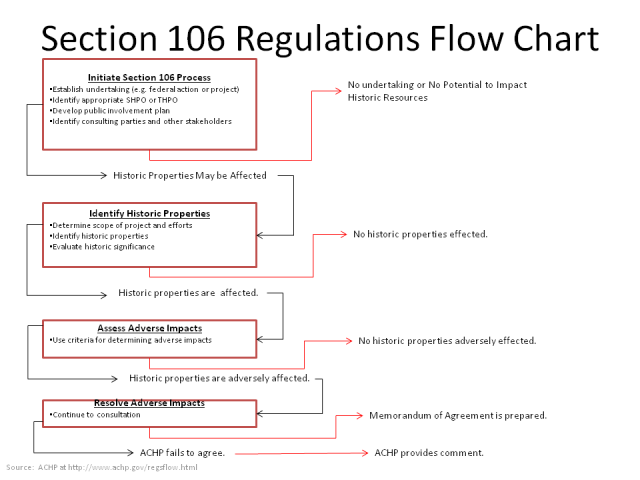
The federal environmental process includes a myriad of individual subjects but there are five big players. These are cultural resources, biology/ecology, hazardous materials, public outreach/involvement and permitting. Cultural resources are relevant for every single federal project that must go through the environmental process. The field encompasses archaeology (prehistoric and historic), historic architecture and Native American culture and tradition. It includes archaeological sites, artifacts, buildings, bridges and districts. These resources are located in every state of the United States and include sites such as the Golden Gate Bridge, Gettysburg Battlefield, Serpent Mound, Miami Art Deco District and the Alamo.
Most cultural resources are not widely advertised and are low key. Almost every federal action requires going through the NEPA process. As such, every federal agency has a process to address cultural resources for their actions or projects. Professional archaeologists and historians perform the field studies required to document cultural resources within the area of potential effect (APE).
What Agencies Are Involved?
Three federal agencies are the lead authority for cultural resources- National Park Service (NPS), Advisory Council on Historic Preservation (ACHP) and Bureau of Indian Affairs (BIA). Each state also has a State Historic Preservation Officer (SHPO) that is the point of contact for cultural resources consultation. Native American Tribes also have a designated Tribal Historic Preservation Officer (THPO) as the point of contact for cultural resources on tribal land or areas of significance to the tribe. Multiple states have County and City Historical Commissions that regulate local decisions. Most states also have a similar state regulation that mirrors the federal requirements. This means most state and local government actions need to address cultural resources as well.
What Are the Primary Regulations?
Section 106 of the National Historic Preservation Act of 1966 (NHPA) established the Advisory Council on Historic Preservation (ACHP) and requires federal actions to assess and address historic resources. (1) Historic resources include “architecture, history, archaeology and culture.” (2) NHPA requires federal agencies to establish formal historic preservation programs, which created a focus of historic preservation as national policy. The NHPA creates a process to determine how actions affect pre-historic and historic resources and requires adverse impacts to be minimized. It also affords the ACHP, SHPOs, THPOs and NPS an opportunity to be involved beginning early in the process.
The National Historic Preservation Act also created the National Register of Historic Places. A list of criteria establishes which properties are eligible for listing on the Register. If a property is listed or eligible for listing, then it would be a historic property under Section 106. (3) Section 110 of the National Historic Preservation Act protects National historic landmarks.
At the turn of the 19th century, artifacts were being taken in sufficient quantity as to raise concerns about damage to cultures and future generations. The American Antiquities Act of 1906 was to minimize the damage caused by artifact hunters. It also allows for the designation of public land as a historic, pre-historic or protected site. This is how our National Monument and National Park systems were established. (4)
The Archaeological and Historic Preservation Act (AHPA) created a mechanism to protect archaeological and historic data from permanent loss. When a federal project uncovers unanticipated artifacts, a data recovery process is initiated to prevent the loss of the information. (5)
The Archaeological Resources Protection Act (ARPA) functions similarly to the AHPA previously discussed. It established a permitting process requiring extensive coordination to minimize the loss of data and artifacts. ARPA opens communication between federal agencies, which allows for greater sharing of data.
Native Americans Grave Protection and Repatriation Act protects the culturally sensitive sites, burial sites, religious artifacts and human remains of Native American tribes, Native Hawaiian populations and Eskimos. This regulation is fundamentally about establishing a culture of respect for indigenous culture and history.
The American Indian Religious Freedom Act protects religious locations, materials and artifacts of Native Americans, Native Hawaiians and Eskimos.
There are many other guidance documents, executive orders, state processes and local processes. Contact your local historic commission, SHPO and THPO to find additional information tailored to your home state.
What is the Process?
Federal agencies consult with SHPO and ACHP to ensure their activities do not degrade historic or pre-historic resources. Many federal agencies have established agreements with the SHPO, THPO, equivalent state or local agencies and ACHP. Federal agencies use a process established by NHPA, which identify potential cultural resources impacts, minimize anticipated impacts and propose any mitigation items as appropriate.
Public outreach and participation encompasses a large part of the federal cultural resources process. Formal coordination with SHPO is completed using the results of the studies completed. It should be noted that other agencies may be included in the coordination depending on the action and any agreements that may be in place. The result of this process is documented in Section 106 compliance documents. The results are also summarized in National Environmental Policy Act (NEPA) documents. Figure 1 below depicts the general four-step Section 106 process.

How to Get a Property Registered on the National Register of Historic Places?
Anybody can start the process of determining if a property or site is eligible for the National Register of Historic Places. Your SHPO will have the forms necessary to document the property and they are an invaluable source for information. There are 3 general criteria that will be evaluated. These include the age of the property, integrity of the property and significance of the property.
In order to be eligible, the property must be at least 50 years old and hold the same integrity as the original architecture. Significance is rather broad and includes evaluating if the property was associated with historical events or people. For example, can the site provide new information through archaeological evidence of pre-historic events or culture? (6)
The forms you obtained from your SHPO are completed to show how the property meets the criteria. These forms and supporting data are compiled into an official nomination to the ACHP requesting the property or site be listed on the National Register of Historic Places. SHPO will review the documentation and make a recommendation if the property or site should be listed on the Register. The recommendation is forwarded to the NPS for review. If NPS agrees, the Keeper of the National Register of Historic Places will add the property or site. (6)
It should be noted that a property cannot be listed on the Register without the property owner's consent. However, the property can be determined to be eligible for listing. This affords the property protection in the future and federal agencies will consider it a historic property for future projects or actions.
Why Do Cultural Resources Matter?
There are multiple reasons why we should protect cultural resources. Some areas of the United States work to balance historic development with new growth. Other areas value new development at the expense of local history. The areas that focus on new development generally are not against history or culture. They presume that future generations will have the same knowledge and access to knowledge as they do today. They are focused on making sure future generations are competitive and have not realized that it is not an “either / or” choice. Some areas are fearful of losing their past and they have a difficult time looking toward necessary growth of the future. It is about balance. There comes a point when future generations can only learn about the past through cultural resources preservation and education.
It has been said that you must understand where you came from in order to know where you are going. We have seen history become muted over time and rely on our cultural resources regulations to give our past a voice for the future.
Sources
- https://www.fhwa.dot.gov/environment/env_sum.cfm#sec110
- http://www.nps.gov/archeology/TOOLS/LAWS/AntAct.htm
- Cultural Resources 101: Part of the Federal Environmental Process - March 8, 2015
- Introduction to Environmental Finance - January 26, 2015
- Indoor Air Quality and Environmental Health - December 21, 2014






